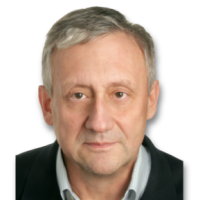
Advisor
TENEX, Rosatom
Alexander Boytsov has more than 48 years of broad and advanced practical national Russian and international experience in uranium deposits exploration, resource estimation, mining, and processing.
Dr. Boytsov also known as uranium market analyst.
Alexander Boytsov graduated from the Moscow Geological Institute in 1977 and completed his post-graduate studies (PhD, Geology & Mineralogy) in 1984 Prior to TENEX, he was Executive Vice-President Exploration for Uranium One Inc. and Deputy Director General for Atomredmetzoloto – top uranium producers. He was a Co-Chair for the 2021 WNA Nuclear Fuel Market Report and represents Russian Federation in the Joint IAEA-OECD Uranium group being its Vice-Chairman since 1999.
Dr. Boytsov authored and co-authored over 100 publications in Russia and overseas including the book “Uranium geology, mining and economy” published in 2012
Global uranium industry outlook and challenges
By 2040, an 80% increase in uranium demand is projected for the world’s nuclear industry. The growth of the world nuclear energy uranium requirements in the long term will entail large low cost uranium projects depletion and secondary sources reduction. The gap between established uranium supply sources and demand may amount to about 46 thousand tons of uranium in 2040. Low uranium prices have constrained the development of new production for more than a decade. The amount of low cost resources is insufficient to ensure the required long-term growth rates of uranium production. Discovery and development of new highly profitable deposits should be the priority target for uranium resources replenishment.
Rosatom is keeping leadership in the global uranium industry being in a top three global companies in uranium production and in identified uranium resources. Significant low cost resources secure U production. Rosatom uranium asset portfolio is highly diversified both geographically and through the entire mining cycle. Russian uranium mining assets include one conventional underground mining complex and two ISL mines. Overseas uranium production is based on five ISL mines in Kazakhstan, one under development open pit mine in Tanzania and one exploration ISL project in Namibia. Rosatom strategy is to keep leading position in a long-term perspective through existing mines development and entering into new overseas uranium projects.

